Gelid Liquid 120 Review
Introduction
With the Gelid Liquid Series, Gelid tried to re-invent the AIO by introducing a Temperature sense with its display right ontop of the water block. Although this has been done before, this implementation comes completely software-less, making it a lot easier to use! Let's take a closer look at Gelid's Liquid 120 and see if the performance of this 120mm AIO can keep up with our benchmark machine.
Positive
Neutral
- Performance Average at best
- Average Noise-to-Performance
- Temperature Sensor is displaying the temperature of the backside of the Cold plate
Negative
- Short Tubes
- Low-Quality Tube Sleeving
What's in the Box?

Gelid's Liquid 120 comes inside the average AIO type of package containing the following items:
- Gelid Liquid 120 Radiator
- Installation Hardware AMD & Intel
- Gelid GC-4 Thermal Paste
- Sata to 3-pin ARGB Adapter

Down below we added a short summary of the Gelid Liquid 120's specs
| Name | Gelid Liquid 120 |
| Dimensions (Radiator) | 120 x 154 x 27 |
| Fan Airflow | 61.9CFM |
| Fan Noise | < 29.6db |
| Fan Air Pressure | 1.69mm/H2O |
| Fan Speed | 1800RPM |
| Fan Connection | PWM |
| Pump Connection | 3-Pin |
| RGB |
RGB on Fan RGB Ring around Water block |
| Extras | Sata - 3-Pin ARGB Power adapter included (No Modes, auto color choice) |
Compatibility
| Intel | AMD |
| LGA 1700 | AM5 |
| LGA 1200 | AM4 |
| LGA 115x | AM3/+ |
| LGA 1366 | FM2/+ |
| LGA 2066 | |
| LGA 2011 |
Individual Components
Waterblock/Pump

The water block - pump combo is the heart and soul of the Gelid Liquid series.
On the bottom side, we will find the usual copper base big enough to make good contact with any CPU nowadays available on the market.
But it's the top where it's at. In the center of the ARGB ring going all around the pump, we will find an Infinity Mirror. In the center of this infinity mirror, we will find a miniature display capable of displaying 2 digits.
This is the Temperature display of the Gelid Liquid Series.
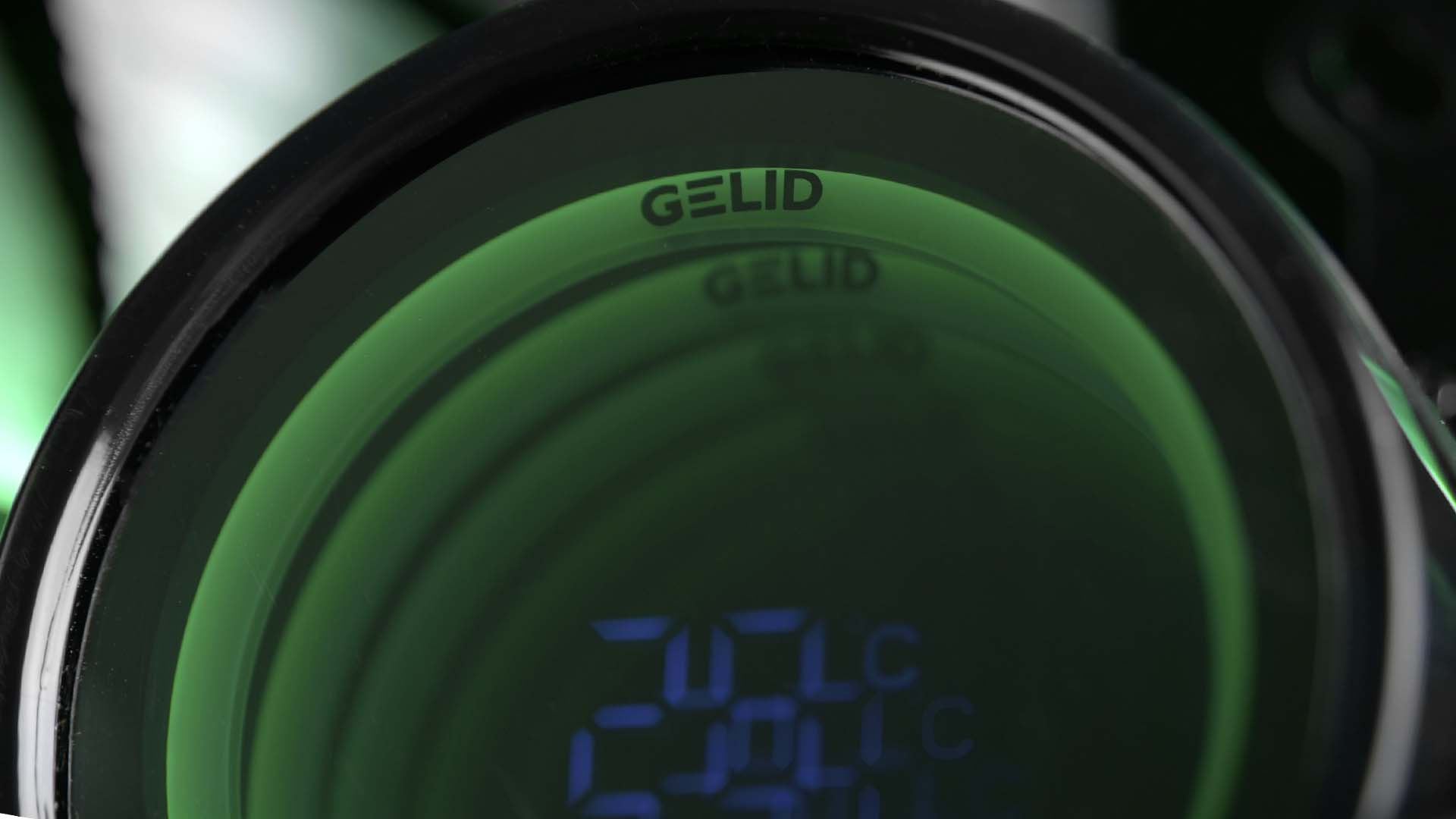
Although we believed differently, the Temperature displayed on there is the temperature recorded on the backside of the cold plate.
Although we are not fully aware of what users may need this number for, we observed that it behaves a lot like a water temperature sensor would.
Additionally, we would like to note that the display is not very bright. This makes it very hard to read the number that is displayed.
Radiator
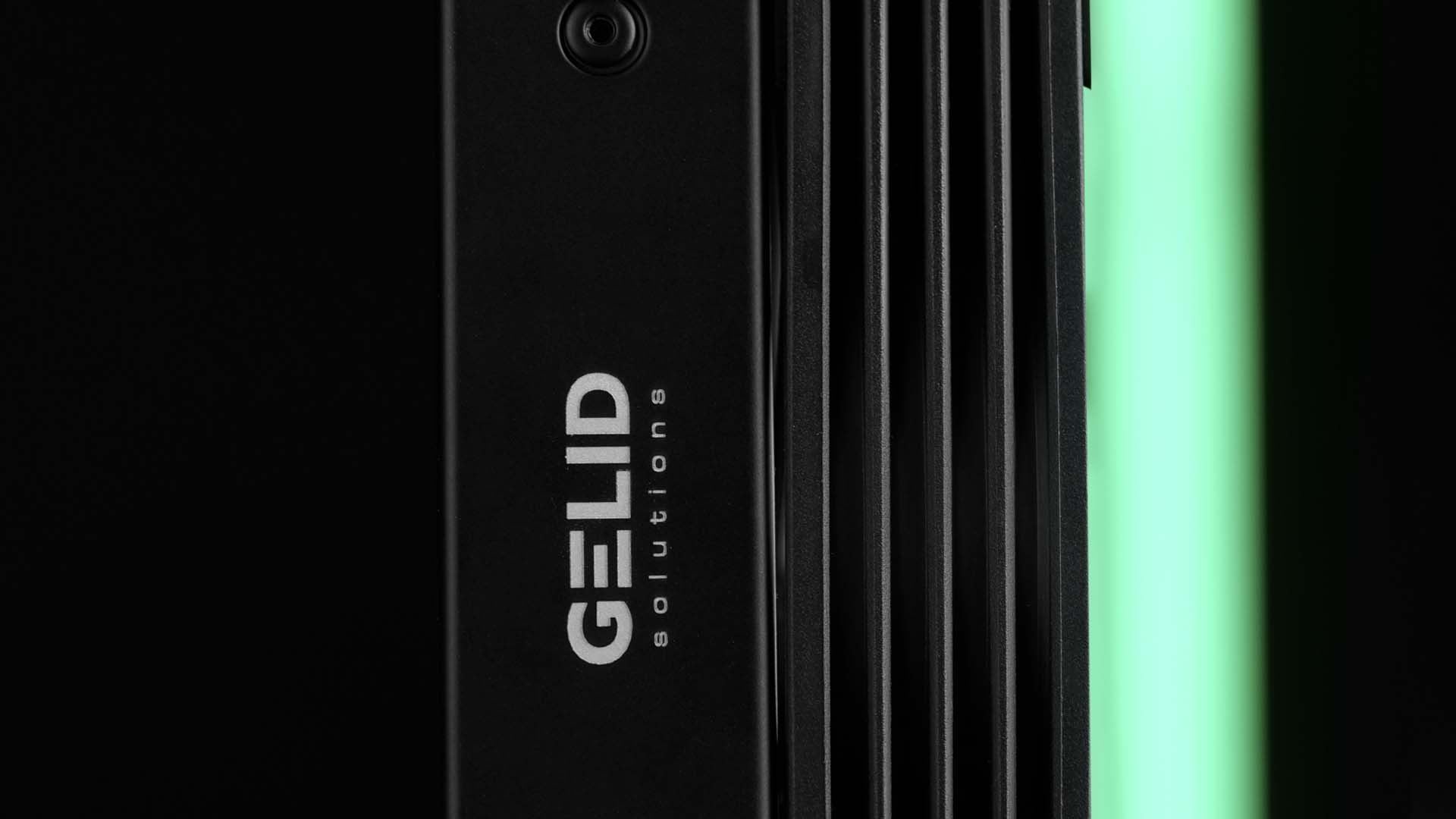
The radiator used on the Liquid 120 is fairly standard. Being 27mm thick and 120mm form-factor, there isn't much to note about it.
Tubes
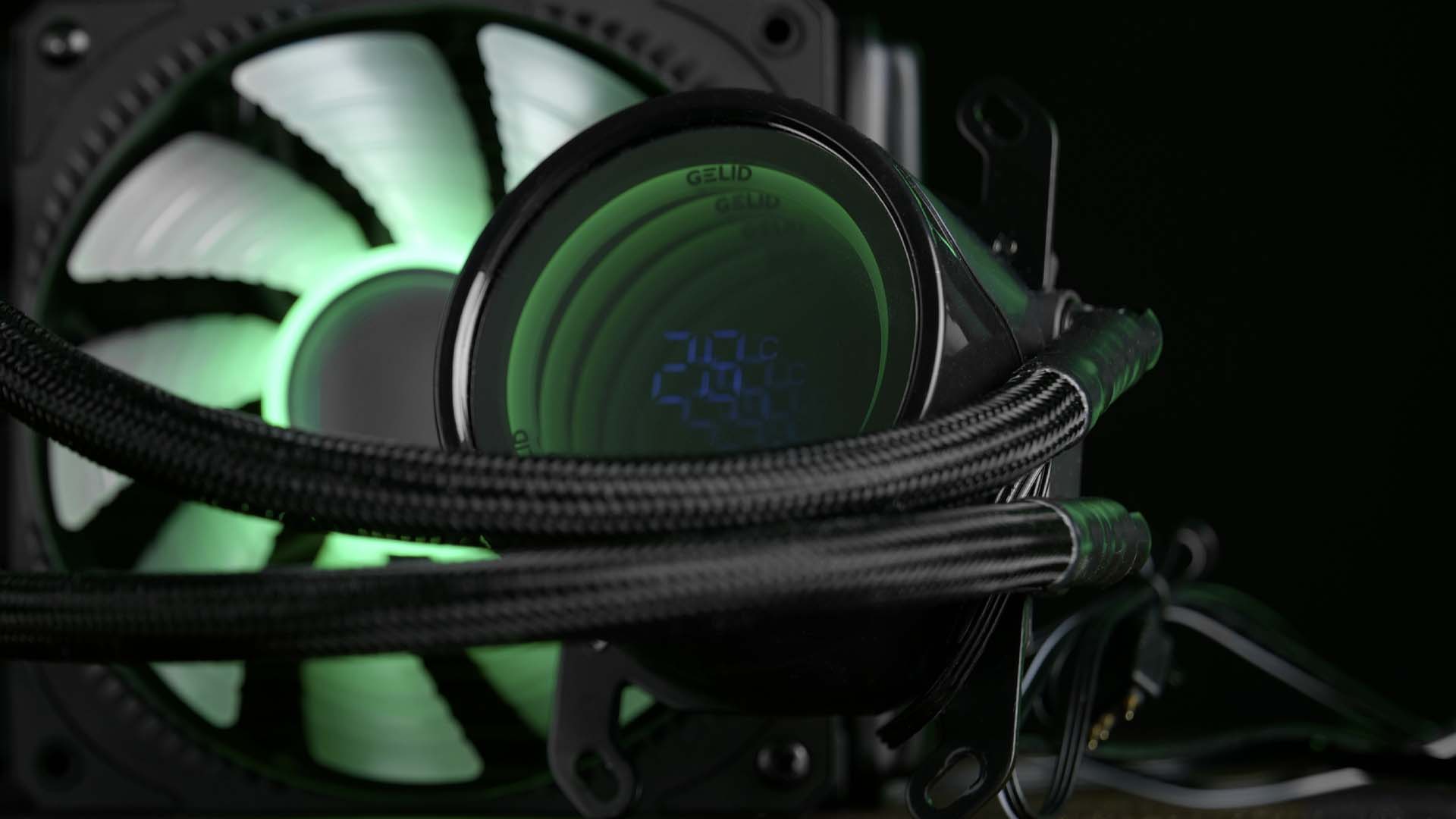
Although the Radiator might not be outstanding, the Tubes are, but not in a positive way.
Being adjustable at the water block may be the only positive aspect of them. From the low-quality feel due to the sleeving to their length, we wish Gelid had invested more into this part of the AIO.
Fans

The unnamed Fans used on the Liquid Series are spinning at up to 1800RPM whilst pushing 61.9CFM at 1.67mm/H2O.
Although the static pressure produced by these fans doesn't seem to be extraordinarily high compared to alternatives, we noticed the well-chosen frame design of the fans making it impossible for air to escape from the sides.
Appearance
From the Waterblock to the Fan, everything has to be RGB nowadays.
And so it is on the Gelid Liquid 120. Both the Water block and Fan are filled with RGB and RGB Infinity Rings wherever they found a spot to implement them.
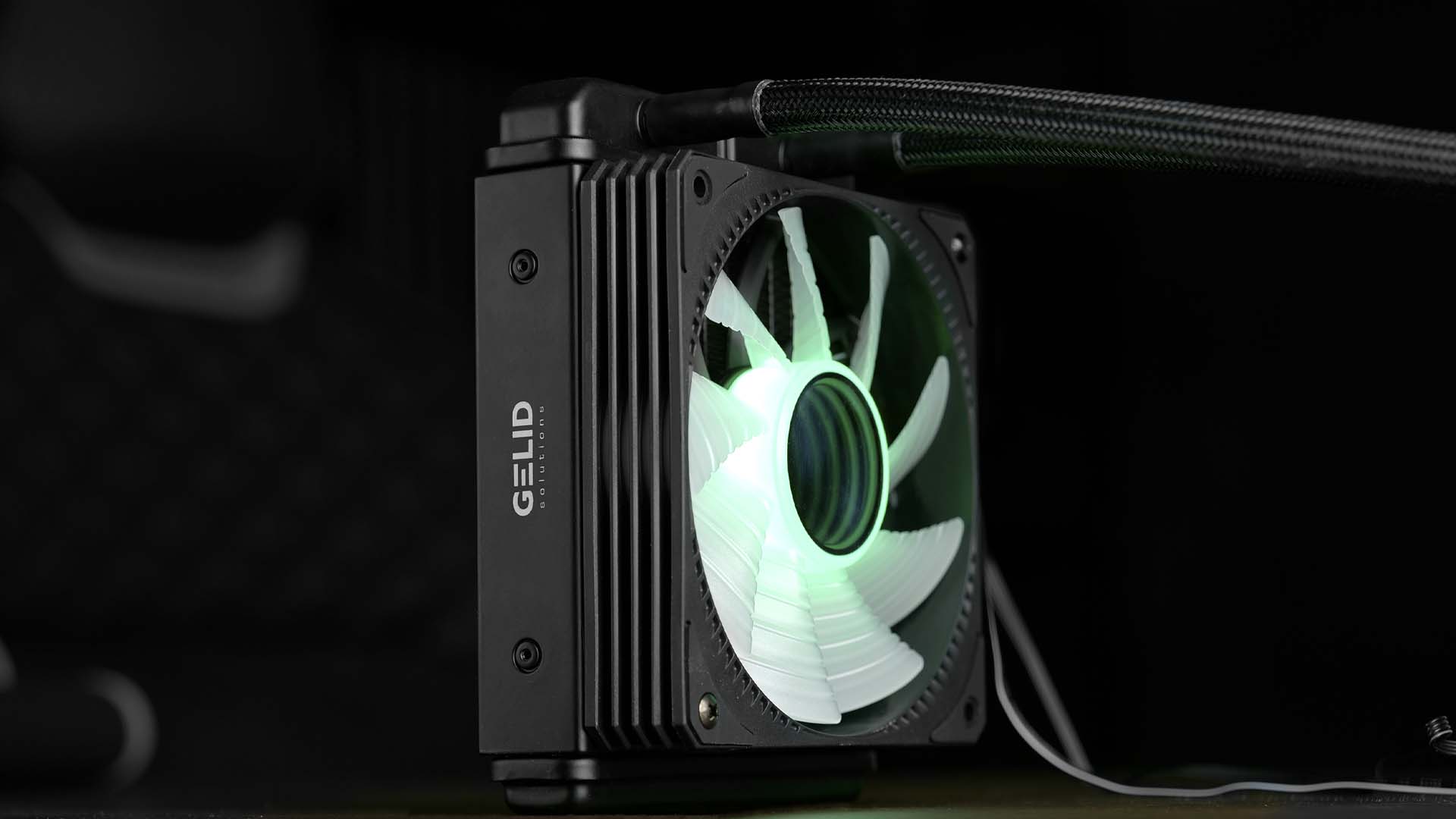
However, the most important design aspect still has to be the Temperature sensor in the center of the Water block.
Although not very bright, and sometimes hard to read, it is definitely a feature that changes the appearance of a product and makes something that was previously lost space, into something valuable
Benchmark
We benchmarked the Gelid Liquid 120 on top of our usual CPU Cooler Benchmark machine using a 3900X and a workload of 135w.

Allowing the Gelid Liquid 120's fan to spin at its max 1800RPM cooled the CPU down to 58.1°C above ambient.
This positions it right next to the Thermaltake TH120 and be quiet Pure Rock 2 Black.
Slowly reducing the fan's speed and recording the noise at each step allowed us to create this noise-to-performance graph.
Here we can see that the Gelid Liquid performs like an extended version of the Cougar Aqua 120.
Except for the Azza Blizzard 120, compared to other AIOs it doesn't look particularly good.

From the Thermaltake TH120 to the Mraken M22, basically, every 120mm AIO we have ever tested had a better noise-to-performance ratio than the Liquid 120.
On the bright side, however, compared to the previously mentioned be quiet Pure Rock 2, the Liquid 120 can beat it in both, max performance and Noise-to-Performance.
Conclusion
It is a 120mm AIO.
Although the Temperature sensor is a really cool feature, especially due to it being completely software-less, it is still a 120mm AIO.
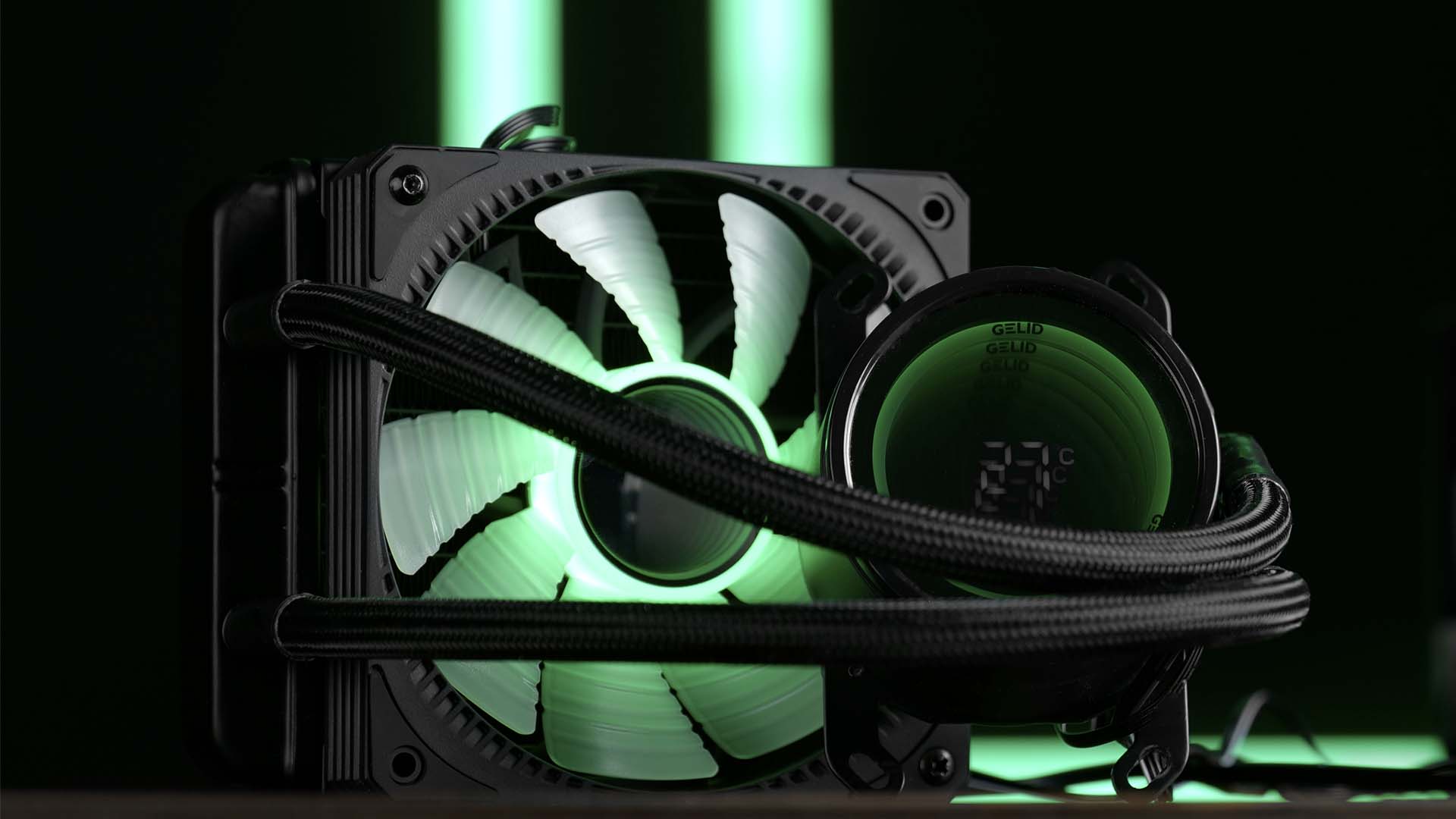
As we have seen with any other 120mm AIO we have tested so far, as long as they do not come with ridiculously thick radiators, the 120mm form factor is just not worth it considering the price increase from the average air cooler.
And so was it for the Liquid 120. At best, the performance was already average for a 120mm AIO. Add to that the -not so good- noise-to-performance ratio, and it is hard to recommend the cooler for any use case.
This may however not be due to the product line, but because every 120mm AIO is average at best.

Added to that, the overall quality of the Liquid Series did not particularly impress us.
From the plastic used on the water block to the ridiculously low-quality and short tubes, nothing gave us the feeling of the "overpowered" cooling machine Gelid promised on their promotional material.

Due to all of the reasons mentioned above, we would strongly suggest either sticking to air coolers or jumping to have a look at the 240mm version of the Liquid before making a purchase decision.

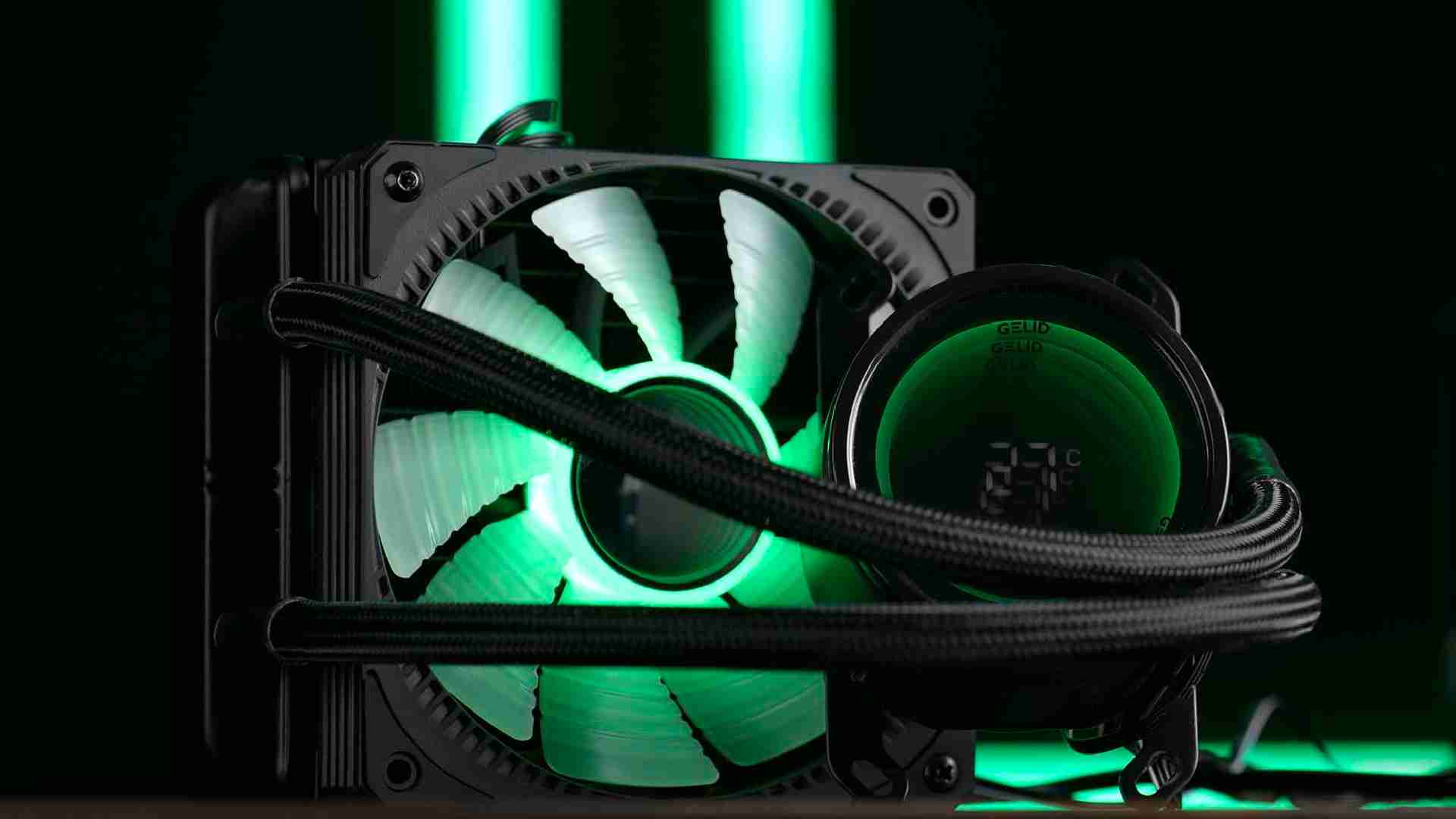
Gelid Liquid 120 Review
With the Gelid Liquid Series, Gelid tried to re-invent the AIO by introducing a Temperature sense with its display right onto
Read More
Phanteks P500A Review
About a year ago, we already had a look at Phanteks P200A. Now, lets find out if Phanteks bigger Mid-Tower sized P500A can de
Read More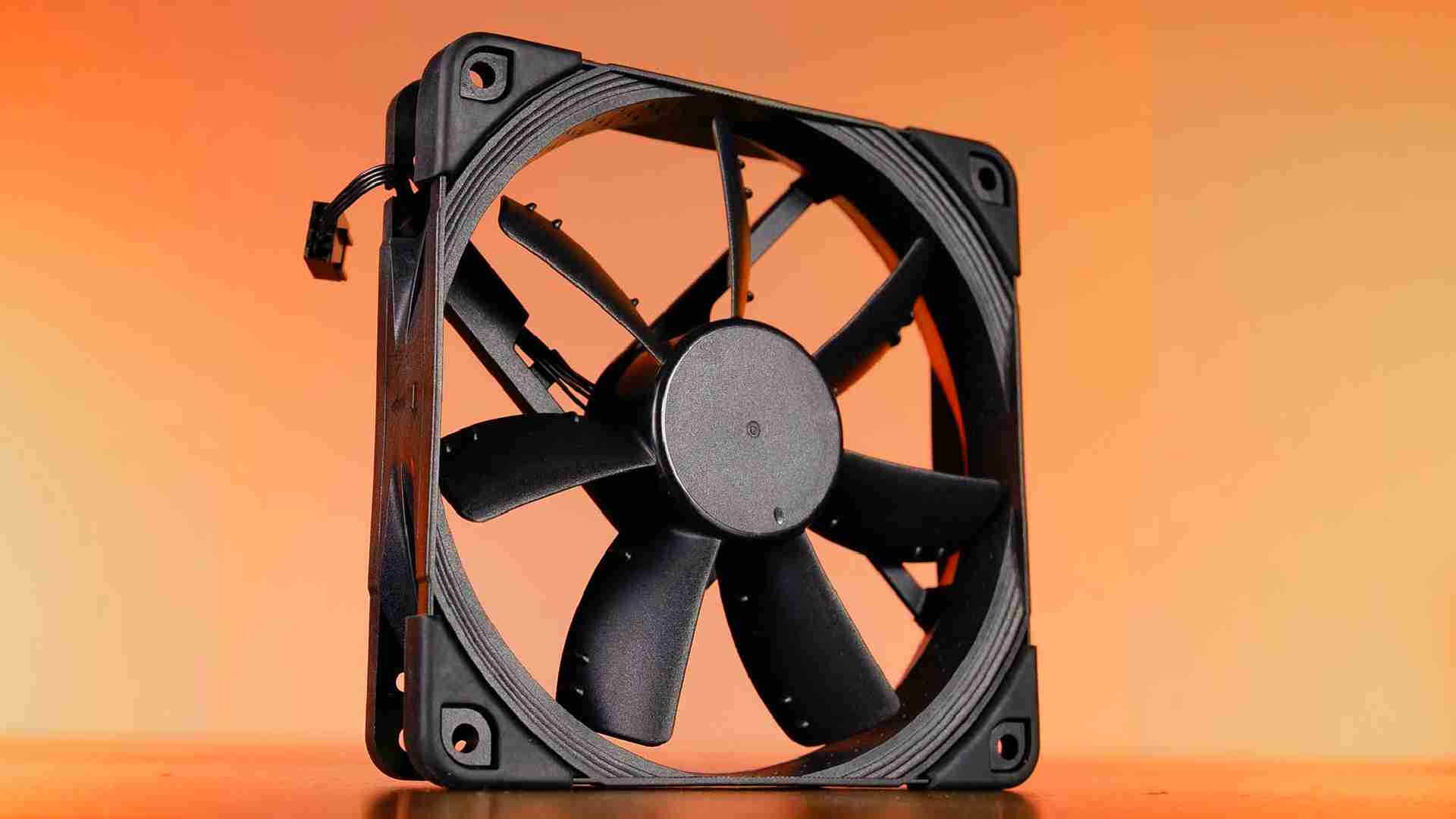
Noctua NF-S12A Chromax Black Review
Out of every existing Noctua NF Series Fan, their S12As are the Airflow kings. After having already reviewed the F12, witness
Read More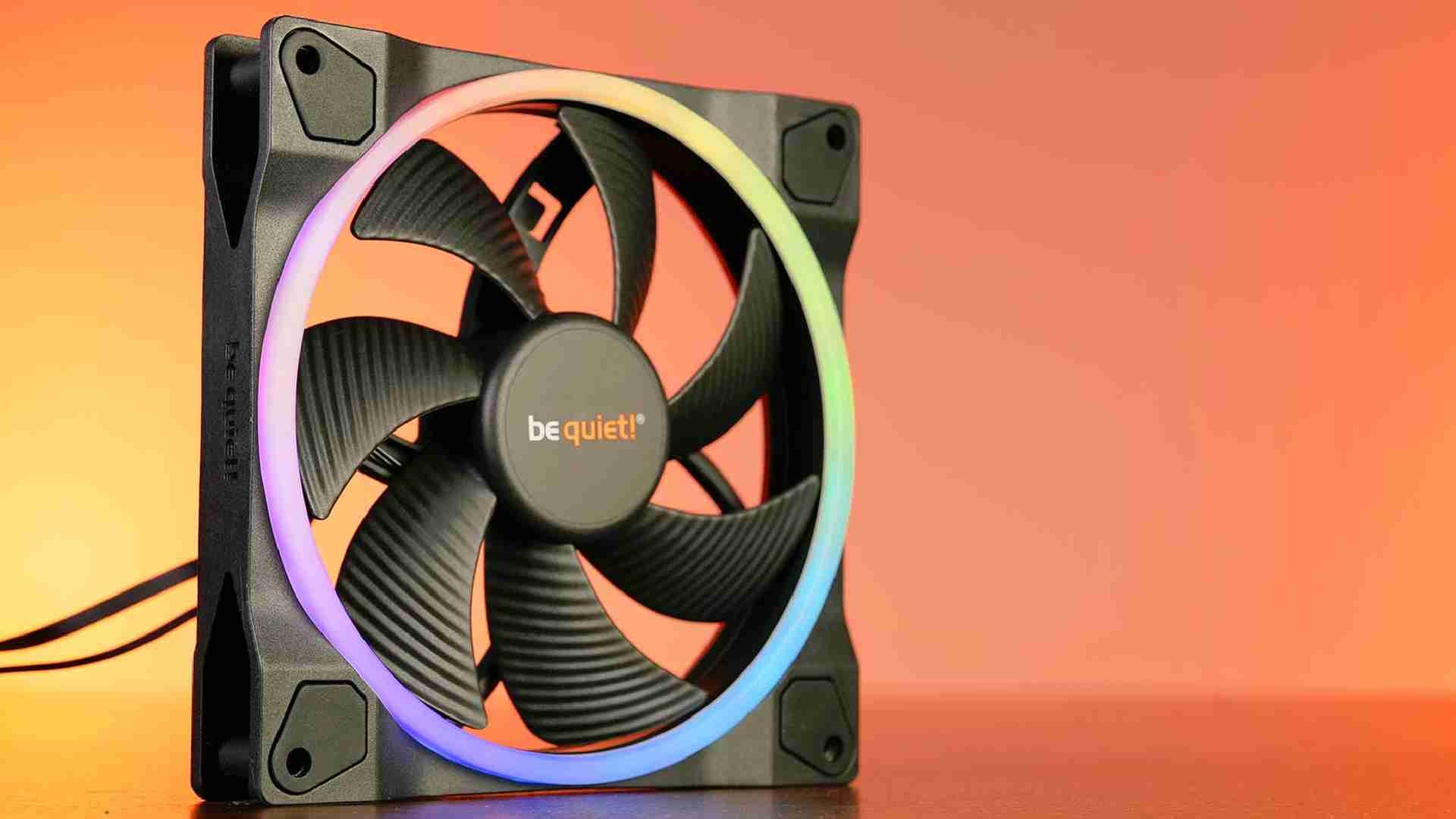
be quiet! Light Wing 140mm Review
The 120mm Light Wings Lineup was pretty much a Success while the 140mm High Speed set was not quite able to keep up due to th
Read More